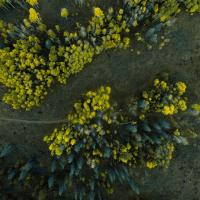In 2011, only five humpback whales were seen breaching the waters around New York City – dismal numbers for a humpback whale population that once thrived in the area.
But just seven years later, citizen scientists counted 272 humpbacks in the harbor. And this year, whale sightings have already broken that record with 377 unique sightings, of various species.
Although whale sightings around New York City are up, whale populations in the Atlantic and around the world are still struggling overall. So whale conservation groups and whale research nonprofits, such as NYC’s Gotham Whale project, are working to help turn the tide.
Challenges Facing the Global Whale Population
Whale populations have faced multiple threats over the ages, including being hunted by humans. But the impact of hunting wasn’t too detrimental during the ninth century, when people only had rudimentary weapons, knowledge, and tools for whaling.
Our impact, however, grew along with our technology. As a result, several species were hunted almost to extinction, including humpback whales, blue whales, and right whales.
The other problem the biggest animals on Earth face is finding enough to eat. Their major appetites match their size, but their primary food source is fairly small. This means they need to eat a lot of it to make sure they have enough nutrition and calories.
Since whales live at the top of the ocean’s food chain, there’s a lot that can go wrong. Any disruption in the food chain below a whale’s position at the top has the potential to reduce their food source, which is primarily comprised of menhaden.
Menhaden feed on microscopic lifeforms, such as algae and zooplankton. But these tiny animals can’t survive in polluted water. When water is severely polluted, as the Hudson River and New York Harbor had been for years, it results in less food for menhaden to eat, and in turn fewer menhaden for whales to eat.
Humans — primarily large, commercial fisheries — are also after menhaden. Although people don’t eat the smelly, oily menhaden for dinner, they’re used as a protein source for animal feed and in nutritional supplements. So the result of polluted waters and commercial fishing sadly means less food for whales.
How the Whale Population is Making a Comeback
Substantial efforts to curtail whaling around the world, as well as legislation designed to clean up our oceans, have both contributed to the rebounding numbers of the whale population.
Established in 1946, the International Whaling Convention (IWC) was designed to oversee, regulate, and manage commercial whaling worldwide. Due to the rapidly declining whale population, the IWC indefinitely banned all commercial whaling. This ban is still in effect today, but certain countries such as Norway, Iceland, and Japan have not honored the prohibition.
The US government also joined the bandwagon to save the whales with the Marine Mammal Protection Act that passed in 1972. The act made it illegal for a resident to hunt, kill, harass, or injure any species of marine mammal regardless of its protection status.
Additionally, the law made it illegal to import marine mammals, or products made from them, into the country. There are now even laws that attempt to protect whale feeding grounds from commercial fishing.
The same year as the Marine Mammal Protection Act, the US also passed the Clean Water Act, which regulates the discharge of pollutants into rivers, streams, lakes, wetlands, and coastal waters.
The Whales Return to New York City
Nearly two-thirds of the Hudson River, which empties into New York Harbor, have been included in one of the Environmental Protection Agency’s largest superfund sites, called the Hudson River Cleanup.
The superfund project involves removing contaminated sediment, the repopulation of aquatic plants, floodplain evaluation, habitat observation, and the regular monitoring of local water quality, plants, and animals.
Citizen scientists are helping document the fruit of these labors. Founded and run by retiree, Paul Sieswerda, Gotham Whale focuses primarily on research, education, and advocacy. Although Sieswerda recently retired from work as an aquarium curator, he wasn’t quite ready to say goodbye to his passion for marine biology.
Sieswerda wanted to put his knowledge of marine biology, ecosystems, habitats, and his experience with marine animals to good use during his free time. So he decided to start Gotham Whale to study the whales living and feeding near New York City.
Sieswerda organized a unique research-gathering initiative, which pairs ordinary citizens with local whale watching tours to gather data on the whales swimming in the waters off the coast of New York City.
Sightseers can snap pictures of the whales they spot, document the date, time, and location, and submit the information to Gotham Whale to be included in the organization’s extensive catalogue of local whales, sightings, and their movements.
Sieswerda also uses Gotham Whale to advocate on behalf of issues that affect the whale population, such as legislation within the commercial sector to reduce pollution, improve water quality, and encourage environmentally conscious commercial fishing.
He works to educate the community about conservation and encourages them to take action on policies and changes that directly affect the whale population. Although New York City isn’t known for its sea life, Sieswerda’s hope is to put the city’s coast back on the map with this citizen science initiative.
So if you’re planning a visit soon, you may want to add whale watching in NYC to your itinerary. All are welcome to take part in the Gotham Whale project to document the whales as they return to the waters of New York Harbor.
For more interesting news about the people and ideas that are changing our world, subscribe to Freethink.


